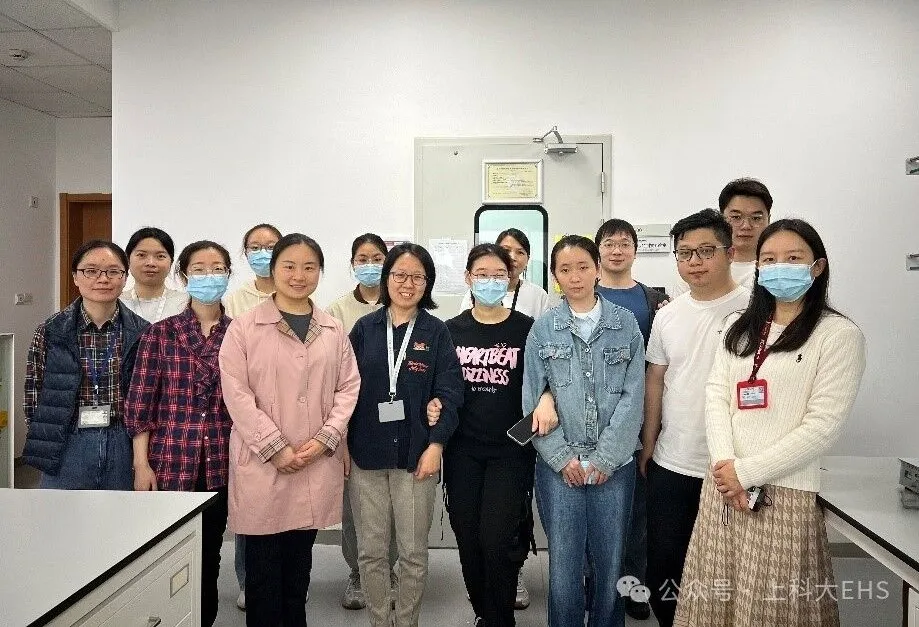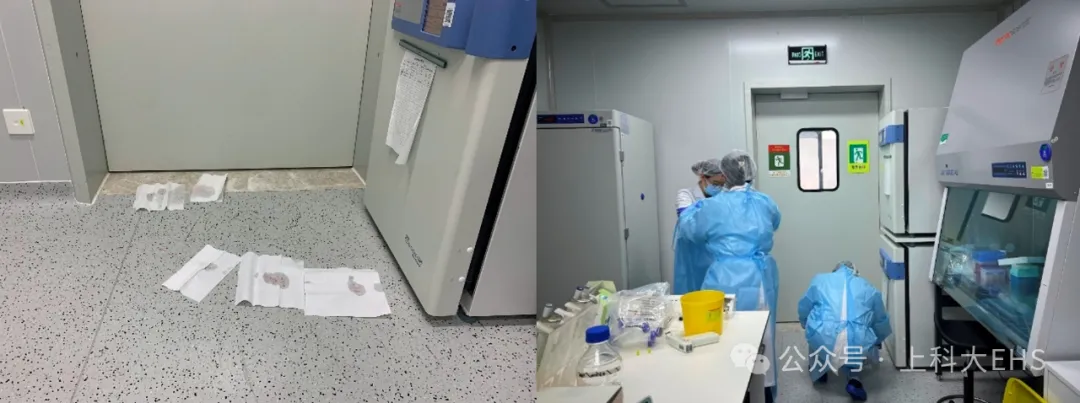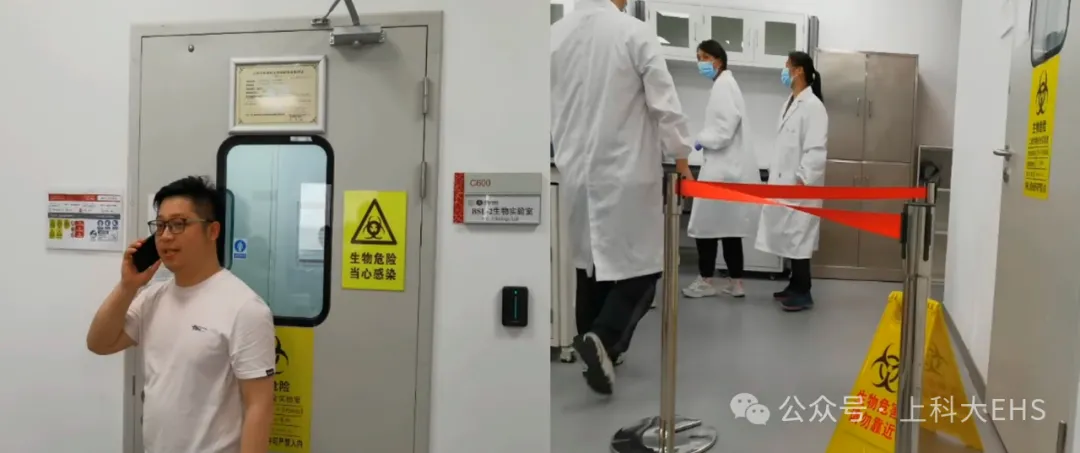The iHuman Institute successfully conducted a simulated BSL-2 laboratory biological spill emergency drill on the afternoon of April 28, 2024. In accordance with the provisions of the People's Republic of China Biosecurity Law and based on actual laboratory work, this exercise aimed to enhance the emergency handling capabilities of laboratory personnel in the face of sudden biological safety incidents, ensuring the safe and orderly conduct of laboratory work.

Photo 1: Group photo of participants
The drill was orchestrated by Liu Junlin, the biosafety officer of the BSL-2 laboratory, who prepared the emergency plan and directed the scene. Teachers Huang Jin from the EHS Department and Fan Feifei from the iHuman Institute coordinated the emergency response and decision-making. Students Qian Zhen, Xiong Kejia, and Zhuang Lu from Ray Stevens' group were responsible for setting up the scenario and simulation, while teachers Liu Yan, Hu Suwen, and Chen Na guided experimental operations and safety measures. A total of 14 faculty members and graduate students participated in this biosafety exercise.

Photo 2: Preparing the deployment site
Before the start of the drill, Teacher Huang Jin from the EHS Department mobilized and deployed the exercise. The laboratory leader explained the relevant biosafety regulations, basic biosafety operational procedures, and protective gear to all participants. In anticipation of potential issues during the exercise, emergency plans and protective equipment were prepared in advance for laboratory personnel.

Photo 3: Emergency handling of the spill site
At the drill site, a simulated emergency situation was created where laboratory personnel accidentally caused a spill of biological samples. After the accident, laboratory personnel swiftly activated the Laboratory Biosafety Incident Emergency Plan, followed established procedures for disposal, and reported the process while wearing protective gear. Initially, personnel at the spill site helped those contaminated with spilled microbes remove their outer clothing and gloves and promptly sprayed the fallen culture bottle and spilled surface with 75% alcohol. They covered the floor with absorbent paper, removed the outer gloves, placed them in a yellow trash bag, and then several laboratory members immediately evacuated the lab, made timely reports to the lab safety officer and relevant school management departments, and closed the operational area to prevent contamination spread.

Photo 4: Alarm activation, setting up caution tape, and placing a Biological Hazard - Do Not Approach A-frame sign
Subsequently, the emergency team members evacuated nearby laboratory personnel and set up safety barriers about 5 meters from the laboratory door in the corridor, erecting a Biological Hazard - Do Not Approach A-frame sign to direct unrelated personnel to evacuate to a safe area.

Photo 5: Final decontamination
Emergency response team members Qian Zhen and Hu Suwen, wearing protective suits and goggles, entered the cell room for final decontamination. Qian Zhen sprayed alcohol on the spilled sample again and collected the contaminants in a yellow trash bag, which was passed through a transfer window; 500 mg/L sodium hypochlorite was used to spray the contaminated floor and the entire cell room. Afterwards, they quickly exited the laboratory and turned on the UV disinfection lamp in the cell room (operated by Hu Suwen). The transfer window removed the contaminants, which were labeled with high-pressure sterilization strips and Bacillus spore test reagents, and placed in an autoclave for sterilization.
During the drill, laboratory personnel also demonstrated the correct method of donning and doffing protective suits, hand disinfection steps, and biological waste disposal process, which are crucial for preventing biological contamination and protecting personnel safety. The exercise particularly emphasized the collaboration and communication abilities of laboratory personnel in dealing with sudden biological safety incidents. Throughout the drill, the laboratory staff worked closely together, quickly and effectively completing all emergency tasks. The emergency team also maintained close communication with the EHS department management of the school to ensure smooth information flow and timely decision-making.
After the exercise, an expert panel reviewed and summarized the drill process. They believed that the drill fully demonstrated the professional abilities and teamwork spirit of the laboratory personnel in responding to sudden biological safety incidents, achieving the desired outcomes. The experts also provided some suggestions for improvement to further enhance the laboratory's biosafety emergency system.
The successful conduct of this BSL-2 laboratory biological safety emergency drill not only enhanced the emergency handling capabilities of the laboratory personnel but also provided a strong guarantee for the biosecurity work of the laboratory. It also improved the iHuman Institute BSL-2 biological laboratory safety emergency plan, enabling personnel to make rapid and correct emergency responses to unexpected events. Additionally, it raised the safety awareness of laboratory workers and trained each laboratory personnel in practical skills for handling sudden incidents. It also served as a reminder to all laboratory personnel to strictly follow standard operating procedures, adhere to regulations and biosafety work rules, and prevent laboratory safety accidents, ensuring the safety of the laboratory, medical staff, and patients.
Moving forward, the iHuman Institute BSL-2 biological laboratory will continue to strengthen its biosafety management to ensure the smooth progress of scientific research.


